RZs 856 is the story of a research into an archive of 856 slides. With no personal connection to these very personal images I looked at them with growing interest. I approached them in strictly theoretical and detached ways, but the further I came in this, the more attached I became. Objective and theoretical approaches, from my personal interests in visual culture and art, are presented on this page, but I want to conclude with a video that relates these images to my personal journeys, from which they more and more became a part.
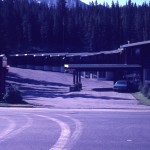
Rediscovered photographic treasure
NL- Artist finds 856 slides of Dutch world traveller R.Z. from H. The world had given up on finding any trace of the over 25 years of travelling R did, but was surprised last Tuesday as the news became public. Locked in specifically designed storage units, the slides where well kept. This ensured the superb quality of the slides. A seemingly random combination of Kodachrome, regular Kodak slide film, Fuji Sensia and Agfa, although it does look like R always used the same camera his entire career. This collection contains images from his trips to North and South America, Asia and various trips around Europe. Depicting local transportation, nature and culture, R is praised for his ability to show all different corners of the earth in the same snapshot/tourist kind of way. Immediately recognizable, but still unique. Included in the collection is R’s cassette with French chansons he apparently deemed important for this body of work. It is still unknown where the collection will go and what will happen to it. No relatives have been found and if no one claims the slides before the end of next month they will be donated to the Dutch photo museum in Rotterdam. For now they are exclusively on view at Negotiating Equity.
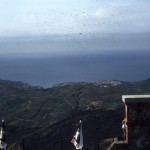
Facts
- 1 slide projector Singer Caramate 4000
- 1 cassette with French Chansons
- 849 slides
- 71 Kodachrome
- 103 Kodak
- 272 Fuji
- 253 Afga
- 150 Other
- 35 of a newborn baby
- 78 with the same woman
- 5 with a man (possibly himself)
- 39 with a young man
- 623 from holidays
- 17 from parties
- 325 from the Americas
- 230 from Asia
- 76 from buildings
- 39 from plants and flowers
- 112 with some sort of transportation
- 5 overexposed
- 3 underexposed
- 117 blurry
- 28 with noticeable fingerprints
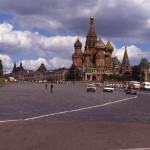
Legacy
In this time, where authorship is such a big issue, how interesting is it when an artist or photographer (like R.Z.) leaves his magnum opus without any further instructions? Could the disposal have something to do with the nature of the photographs? A photograph as a lieu de mémoire, a direct link with the past, a proof of different times, the evidence of a
troubled past- relationship.
R.Z. travelled a great amount and it seems he kept on bringing the same people with him. Since we could never be certain about the order of the slides, we remain unsure, but it appears that more and more trips were undertaken alone later in his life.
Or maybe he was just tired of the limitations of photography and slidefilm. True, a photograph still is a depiction of a certain moment, at a certain time, but it can never capture the real essence, the aura of any of the places R visited. Could he be fed up with the lag between making the photo and seeing the result?
Anyhow, whatever the reason is he left the slides, the interesting part is what to do with them now. What I propose is a recollection of R’s life. Trying to recreate his steps and whereabouts as accurate as possible. Starting from his first trip to China, via the birth of his son, the visit to the Grand Canyon and New York to the various parties in his neighbourhood ending with the trip on the Trans-Siberian Express and his revisiting of Beijing. Alone, after his wife left him. Staying as close as possible to the actual facts, tracking down friends or family and searching for evidence of his undertakings.
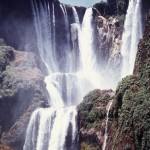
Authorship
Why is everybody still questioning the meaning R.Z. gave to the image? He is gone and left the slides behind. If he wanted to be considered in this he would have left a note. I believe we encounter something unique here. Finally a situation people who believe the author is dead have been waiting for. Art without any instruction, added meaning, explanation or background (both personally & culturally). The making of a story here is completely up to the viewer.
First you just see an image, a denotation without a conclusion or interpretation. It is only until after the first lookyou realise that the things are there for a reason and that the signs in the image can be
interpreted. And it is not until the third stage that a meaning can be distilled. Whilst watching the images a story starts to unravel. All the journeys you took before are linked to his journey. You might recognize certain imagery or scenery, a language on a sign or even a certain type of people. The images become an illustration for your own experiences and the background you bring with you. Even if signs in the picture are unrecognizable you’ll figure out a way to fit them into your personal horizon. Stop waiting for the artist’s hand to guide you, just watch and see what you make of it!
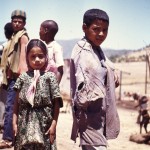
The white guy
Ah yes, another white guy showing us where he has been in his life. We’ve all seen the pictures before, we’ve all heard the stories before, why are we even discussing this? All the images in the series show the same. Someone who could afford to travel this much must be well off. Even if the journeys where for work and paid for by his boss (which I doubt) he still has the means to produce an enormous amount of slides, which, especially at the time were very pricy.
The imagery, also, typical.
R.Z. displays the cultural other. There is an obvious difference between the person taking the picture and the people displayed in the picture – shows a painful gap. No interaction, no response whatsoever. Just a plain depiction of the other.
The photos get even worse when the woman is posing in the picture. Let’s assume she is his wife. He plants his wife infront of an exotic backdrop, shoots the picture (and a couple more) and takes her back to the Netherlands. They try to be flaneurs, but get stuck in being tourists. It doesn’t look like they are actually experiencing any cultural differences, they are just noticing the otherness. Can you imagine the conversations they have with their friends during the slideshow? Photographs can be enjoyed alone, but the whole point of slides is the possibility to project them and display the elements in the picture. The choice of medium is definitely some sort of message here.
And what’s with the French chansons? He definitely put too much effort into being exotic.
Thanks to Eelco, Jort, Lauren and Jimini for helping me out during the presentation and each playing a part of the texts above.
[...] of the series of Sunday presentations entitled The Outlet Inn on Sunday May 16th Vittoria Soddu and Jeroen Marttin presentated Haarhandel the week before and also screened the film Hair India by Marco Leopardi en [...]